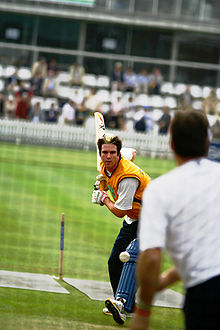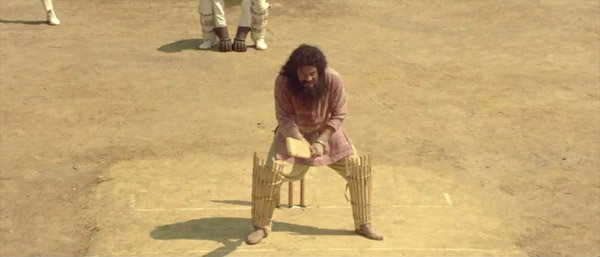Dear Dav,
This has been written before but I have been trying to sorta take this off my chest for some time now, and today and I am taking the liberty of sharing it with you in a hope that you may find something in it that could help Pakistan cricket in a remote possibility. I would like to break this down in a few pieces and try to address this long lingering and painful issue of batting crisis in Pakistani team. I would also love to have your input, feedback, disagreement and suggestions to conclude a solid knowledge base.
Lets start with the simple basic rule of engineering.
“Identify the problem and find the root cause before fixing it”.
Putting a bandage each time to cover up the wound will simply do more damage in the long run. These bandages will fall off one after the other someday and you will have a red swollen body exposed.
Lets identify the problems in Pakistan batting.
(1) One Dimensional Players.
(2) Poor batting technique and short temperament.
One Dimensional players:
What we mostly have is sloggers or blockers. When sloggers are asked to play slow they lose their wicket. When blockers are asked to accelerate the run rate they lose their wicket. The batting line can be divided into two groups with Asad Shafiq perhaps being somewhat exception in the Venn diagram.
First Group: Umer Akmal, Afridi
Second Group: Younus Khan, Misbah ul Haq, Hafeez, Taufeeq and somewhat Azhar Ali.
Both groups miserably lack versatility and the ability to speed up or slow down to cope with the game’s situation.
Poor batting technique and short temperament:
I will start with the back-lift of the cricket bat. Our batsmen play with a seriously low back lift which ends up in feeble pushes and nudges which means the ball usually does NOT reach the boundary even if the shot is played in the gap. There is hardly any solidity in the stroke. Also, the direction of the back-lift is extremely poor. Our batsmen bring the bat down on the ball from the direction of fourth slip instead of bringing it down from the direction of wicket keeper. The opening of the face of the bat is another painful issue.
These three things are the major, major differences between legends of the game and Pakistan’s current batsmen. See the comparative pictures below and analyze the height, direction of back-lift and face opening of the bat by professor Hafeez, Misbah, YK and Azhar Ali and compare it with Sehwag, Tendulkar, Ponting.
Low and feeble back lift from the direction of goddamn fourth slip. Look at the closed face of the bat facing towards the ground.
Same thing. No fire, no intensity and no blaze with a half hearted LOW back lift utterly coming down onto the ball from the direction of slips. Notice the dead bat face facing towards the ground.
Half heart back-lift. The bat will coming down from the direction of slips to meet the ball. Slight misjudgment on the speed of a faster delivery and the ball will pass thru the gate. With this back lift, it won’t reach the boundary unless the ball is hit by some sorta jaw dropping timing.
Bat toe facing towards slip, and bat face facing towards the ground.
Poor souls. Following the footsteps of their seniors since there is no one to mentor on how to effectively play with the right batting technique.
This has been written before but I have been trying to sorta take this off my chest for some time now, and today and I am taking the liberty of sharing it with you in a hope that you may find something in it that could help Pakistan cricket in a remote possibility. I would like to break this down in a few pieces and try to address this long lingering and painful issue of batting crisis in Pakistani team. I would also love to have your input, feedback, disagreement and suggestions to conclude a solid knowledge base.
Lets start with the simple basic rule of engineering.
“Identify the problem and find the root cause before fixing it”.
Putting a bandage each time to cover up the wound will simply do more damage in the long run. These bandages will fall off one after the other someday and you will have a red swollen body exposed.
Lets identify the problems in Pakistan batting.
(1) One Dimensional Players.
(2) Poor batting technique and short temperament.
One Dimensional players:
What we mostly have is sloggers or blockers. When sloggers are asked to play slow they lose their wicket. When blockers are asked to accelerate the run rate they lose their wicket. The batting line can be divided into two groups with Asad Shafiq perhaps being somewhat exception in the Venn diagram.
First Group: Umer Akmal, Afridi
Second Group: Younus Khan, Misbah ul Haq, Hafeez, Taufeeq and somewhat Azhar Ali.
Both groups miserably lack versatility and the ability to speed up or slow down to cope with the game’s situation.
Poor batting technique and short temperament:
I will start with the back-lift of the cricket bat. Our batsmen play with a seriously low back lift which ends up in feeble pushes and nudges which means the ball usually does NOT reach the boundary even if the shot is played in the gap. There is hardly any solidity in the stroke. Also, the direction of the back-lift is extremely poor. Our batsmen bring the bat down on the ball from the direction of fourth slip instead of bringing it down from the direction of wicket keeper. The opening of the face of the bat is another painful issue.
These three things are the major, major differences between legends of the game and Pakistan’s current batsmen. See the comparative pictures below and analyze the height, direction of back-lift and face opening of the bat by professor Hafeez, Misbah, YK and Azhar Ali and compare it with Sehwag, Tendulkar, Ponting.
Hafeez
Low and feeble back lift from the direction of goddamn fourth slip. Look at the closed face of the bat facing towards the ground.
Same thing. No fire, no intensity and no blaze with a half hearted LOW back lift utterly coming down onto the ball from the direction of slips. Notice the dead bat face facing towards the ground.
Half heart back-lift. The bat will coming down from the direction of slips to meet the ball. Slight misjudgment on the speed of a faster delivery and the ball will pass thru the gate. With this back lift, it won’t reach the boundary unless the ball is hit by some sorta jaw dropping timing.
Azhar Ali
Bat toe facing towards slip, and bat face facing towards the ground.
Poor souls. Following the footsteps of their seniors since there is no one to mentor on how to effectively play with the right batting technique.

























 All you have done is caught the batsmen at different stages in their backlift, this does not prove anything. Also the ideal backlift is for the Bat to be pointing at 1st or 2nd slip, too straight does not all , too straight does not allow you to get your wrists into the shot.
All you have done is caught the batsmen at different stages in their backlift, this does not prove anything. Also the ideal backlift is for the Bat to be pointing at 1st or 2nd slip, too straight does not all , too straight does not allow you to get your wrists into the shot.


 ) so was searching on Google and came upon this thread.
) so was searching on Google and came upon this thread. What guard were you taking?
What guard were you taking?

